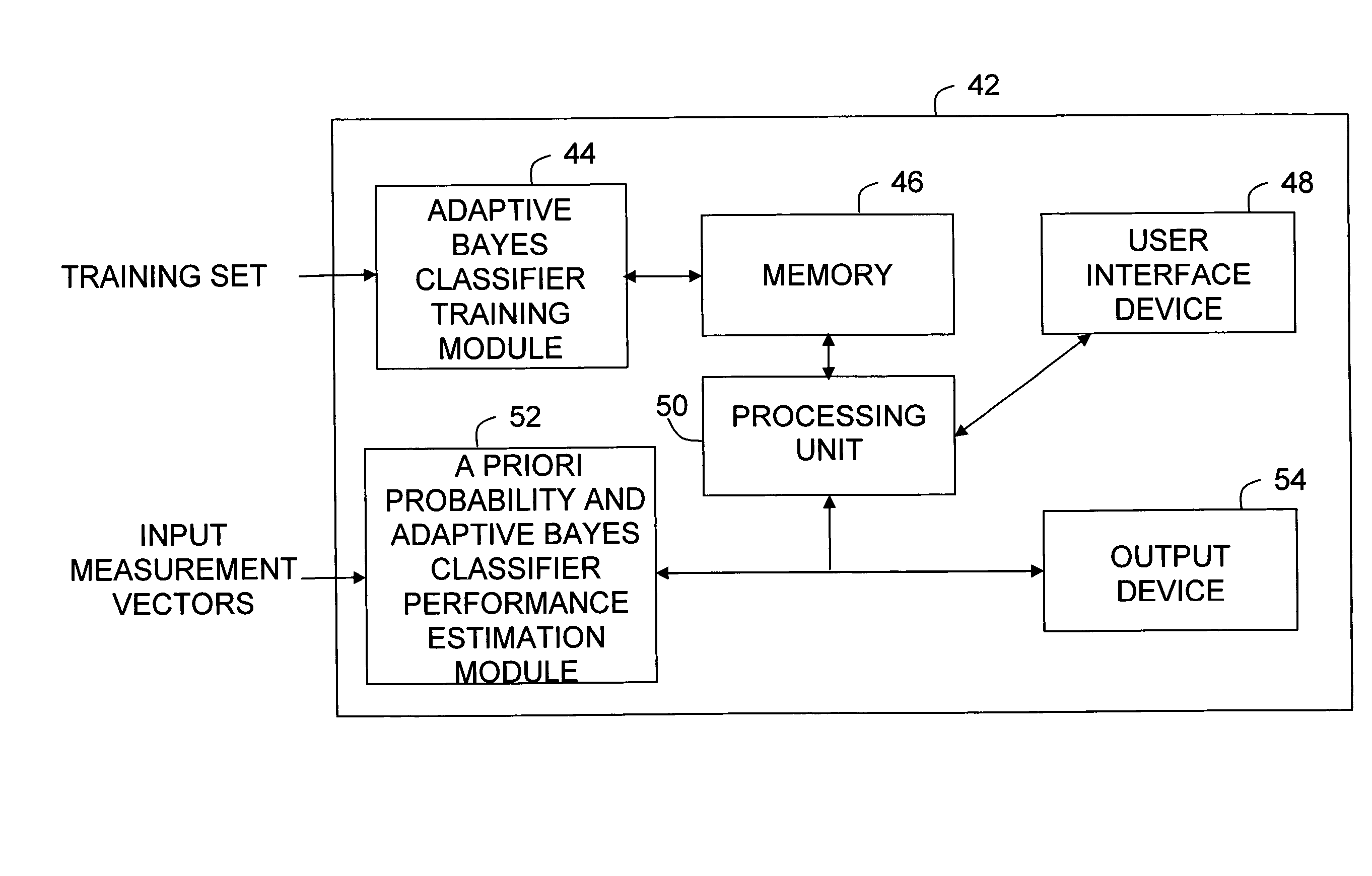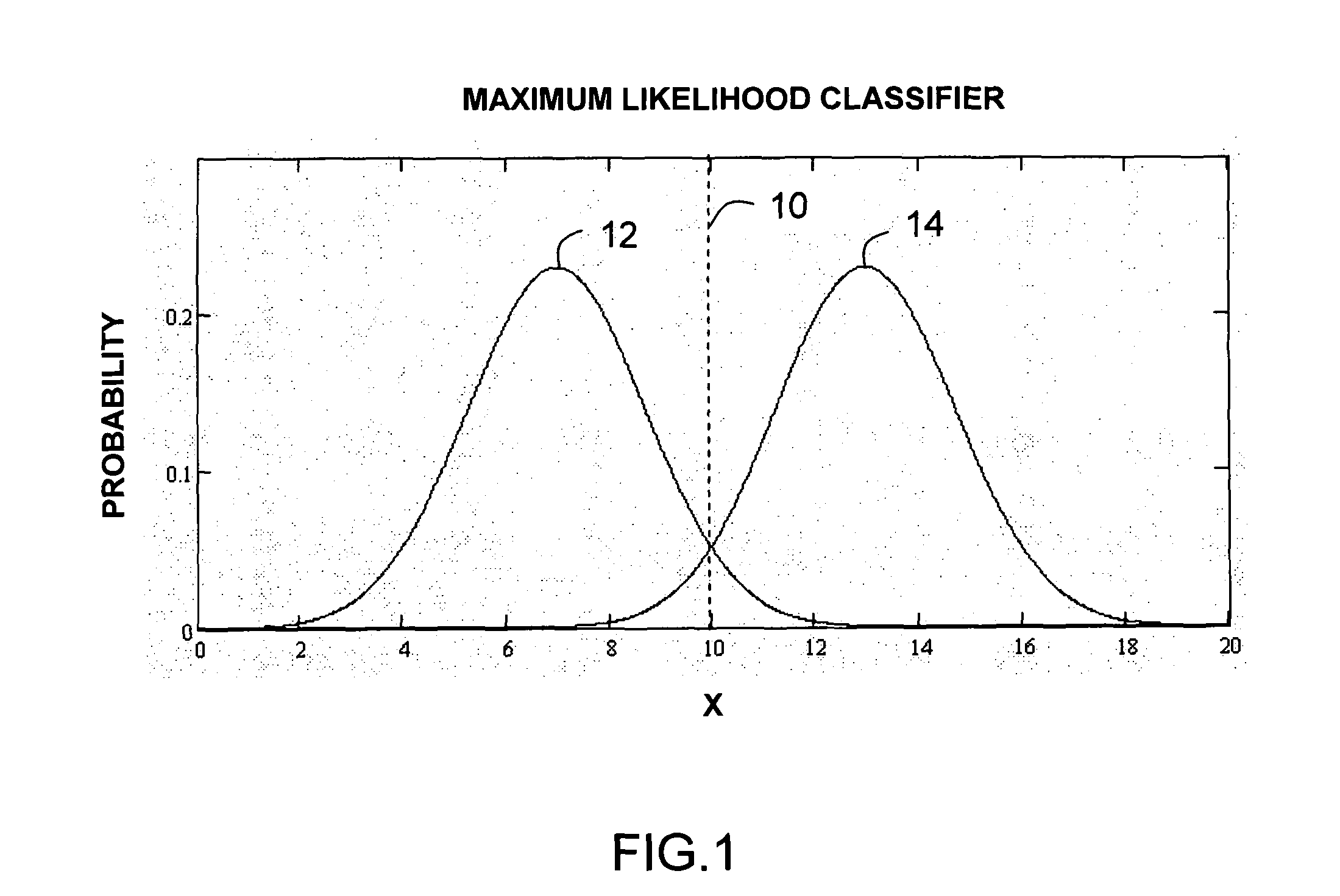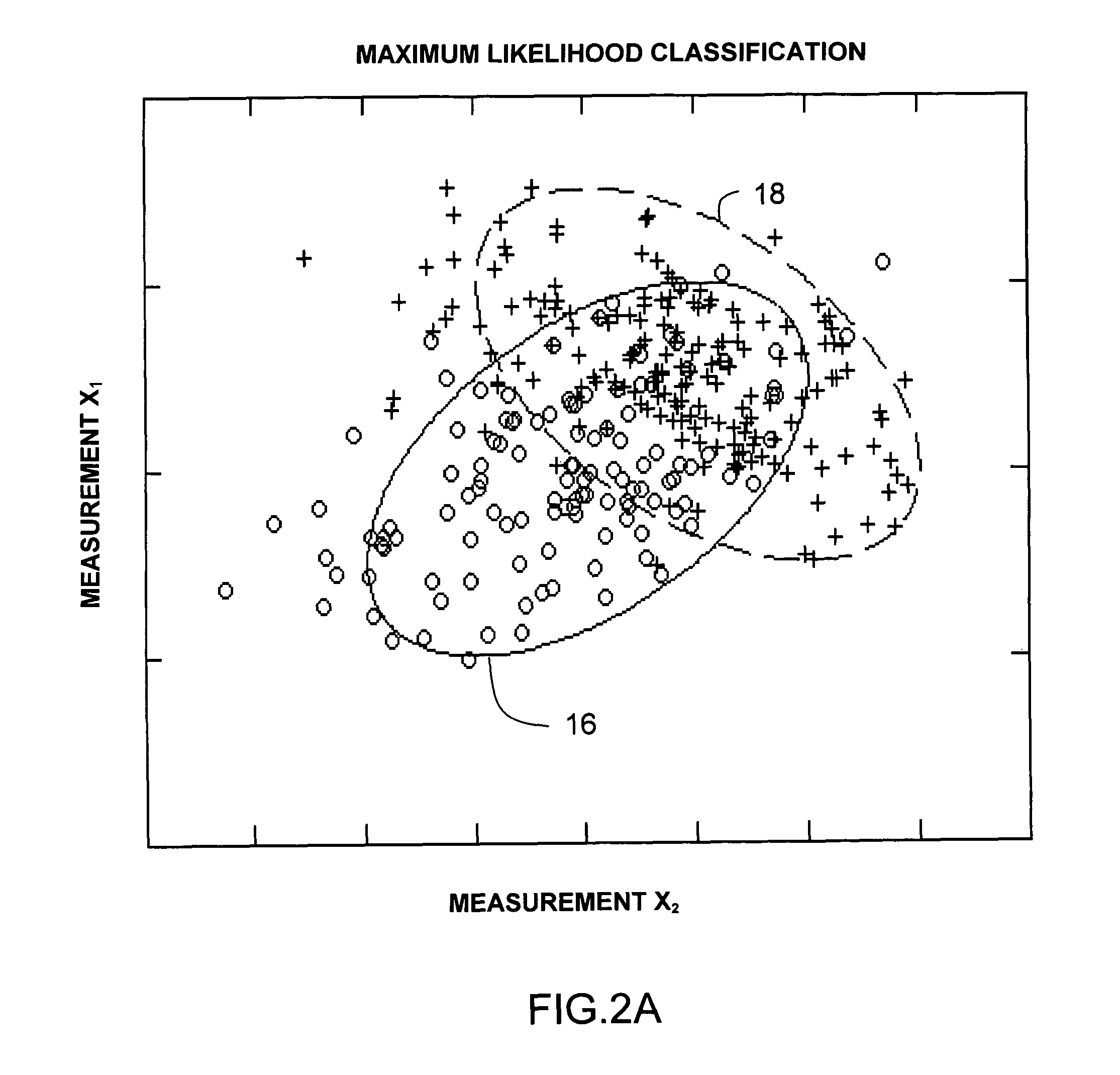Priori probability and probability of error estimation for adaptive bayes pattern recognition
a probability and probability technology, applied in the field of prior probability estimation of, can solve the problems of cost of obtaining labeling samples, inability to obtain, and inability to predict the distribution of class-others,
- Summary
- Abstract
- Description
- Claims
- Application Information
AI Technical Summary
Benefits of technology
Problems solved by technology
Method used
Image
Examples
first embodiment
5, and 7
[0237]Again, shown in FIG. 4, is an A Priori Probability and Probability of Error Estimation system having an adaptive Bayes classifier training module 44, memory 46, a user interface device 48, a processing unit 50, an a priori probability and adaptive Bayes classifier performance estimation module 52, and an output device 54.
[0238]FIG. 5 shows a flow chart for the adaptive Bayes classifier training module 44 used in the first embodiment. In this embodiment, the adaptive Bayes classifier, using the weighted class-of-interest posterior probability function,
[0239]P(Cint / X)WCint,
eq. (75), is implemented using a polynomial approximation of
[0240]P(Cint / X)WCint.
[0241]Referencing FIG. 5, the first step 56 is to select the elements of the polynomial to be used to approximate
[0242]P(Cint / X)WCint.
The polynomial elements are a function of the measurements and the order of the polynomial selected to approximate
[0243]P(Cint / X)WCint.
The polynomial elements are a vector of functions o...
second embodiment
b>6, 7, 8, 9, and 10
[0272]Again, shown in FIG. 4, is an A Priori Probability and Probability of Error Estimation system having an adaptive Bayes classifier training module 44, memory 46, a user interface device 48, a processing unit 50, an a priori probability and adaptive Bayes classifier performance estimation module 52, and an output device 54.
[0273]FIG. 6 shows the flow chart for the adaptive Bayes classifier training module 44 for the second embodiment. In this embodiment the adaptive Bayes classifier, eq. (9), is implemented using a Parzen kernel approximation of the weighted class-of-interest posterior probability function,
[0274]P(Cint / X)WCint,.eq.(71)
eq. (71).
[0275]Referencing FIG. 6, in the first step 60, a set of R unlabeled samples, S={X1, X2, . . . XR}, are randomly selected from the input-data-set. These samples are used as the mean vectors of the Parzen kernels, eq. (36).
[0276]Again referencing FIG. 6, in step 62 the smoothing parameter, H, is estimated for the Parze...
PUM
 Login to View More
Login to View More Abstract
Description
Claims
Application Information
 Login to View More
Login to View More - R&D
- Intellectual Property
- Life Sciences
- Materials
- Tech Scout
- Unparalleled Data Quality
- Higher Quality Content
- 60% Fewer Hallucinations
Browse by: Latest US Patents, China's latest patents, Technical Efficacy Thesaurus, Application Domain, Technology Topic, Popular Technical Reports.
© 2025 PatSnap. All rights reserved.Legal|Privacy policy|Modern Slavery Act Transparency Statement|Sitemap|About US| Contact US: help@patsnap.com



